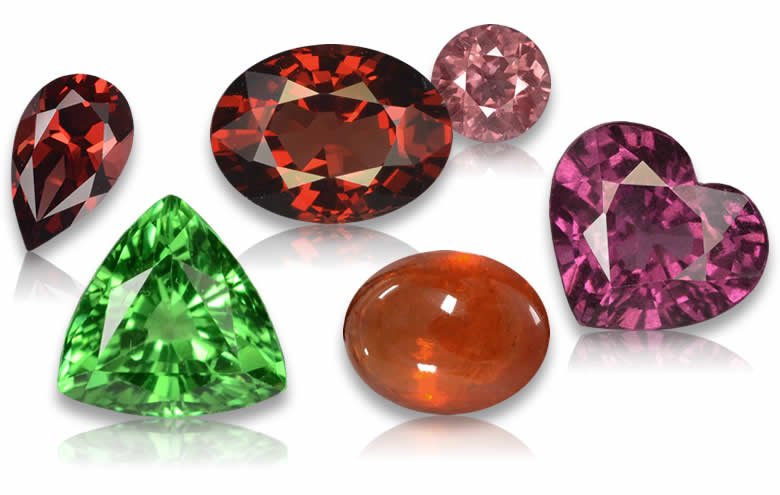Introduction: Garnet gemstones, with their rich and varied colors, have been captivating jewelry enthusiasts and collectors for centuries. These stunning gemstones are known not only for their exquisite beauty but also for the unique qualities and symbolism they carry. In this comprehensive guide, we will delve into the world of Garnet gemstones, exploring their history, characteristics, and the many reasons why they hold a special place in the hearts of gemstone lovers.
Origins and Formation: Garnets belong to a diverse family of minerals that come in a spectrum of colors. The name “Garnet” is derived from the Latin word “granatum,” meaning “seed,” as the deep red color of some Garnet varieties resembles pomegranate seeds. These gemstones have been cherished for thousands of years and have a fascinating geological history.
Garnets are typically found in metamorphic rocks, such as schist and gneiss, as well as in some igneous rocks. They form under high pressure and temperature conditions, resulting in the crystalline structure that gives them their unique appearance and durability.
Characteristics of Garnet: Garnet gemstones are renowned for their vibrant colors and distinct physical properties:
- Color: While deep red is the most well-known color for Garnets, they are available in a wide range of colors, including green, orange, yellow, brown, and even rare blue varieties.
- Hardness: Garnets have a hardness of 6.5 to 7.5 on the Mohs scale, making them suitable for various jewelry applications.
- Clarity: Garnets often have excellent transparency, allowing for stunning faceted gemstones that sparkle brilliantly.
Varieties of Garnet: Garnets are a diverse group of gemstones, each with its unique characteristics. Some of the most popular Garnet varieties include:
- Almandine: Known for its deep red to reddish-brown color, Almandine is one of the most common Garnet types.
- Pyrope: Pyrope Garnets display a rich red color, often referred to as “fire red.” They are highly sought after for their intense hue.
- Rhodolite: A hybrid variety, Rhodolite Garnets exhibit a mesmerizing blend of purplish-red or raspberry hues.
- Tsavorite: Tsavorite Garnets are prized for their vivid green color, rivaling the finest emeralds.
Symbolism and Significance: Throughout history, Garnets have held various symbolic meanings and significance across different cultures. Some common associations include:
- Protection: Garnets are often considered protective stones that ward off negative energies and promote a sense of security.
- Passion and Love: The deep red color of Garnets has led to associations with love, passion, and devotion.
- Balance and Regeneration: Garnets are believed to help balance energy, revitalize the body, and promote overall well-being.
Incorporating Garnet into Your Life: Whether you are a gemstone enthusiast or simply appreciate their beauty, Garnet can be a delightful addition to your life in various ways:
- Jewelry: Garnet jewelry, including rings, necklaces, earrings, and bracelets, allows you to wear these exquisite gemstones and experience their vibrant energy.
- Birthstone Jewelry: Garnet is the birthstone for January, making it a meaningful gift for those born in this month.
- Collecting: Garnet collectors can explore the diverse world of Garnet varieties and add rare specimens to their collections.
- Spiritual and Healing Practices: Some individuals use Garnet in meditation and healing practices to enhance their energy and emotional well-being.
In conclusion, Garnet gemstones have a rich history and diverse range of characteristics that make them highly prized in the world of gemology and jewelry. Whether you are drawn to their symbolism, their captivating colors, or their alleged healing properties, Garnets offer something for everyone.


Reviews
There are no reviews yet.